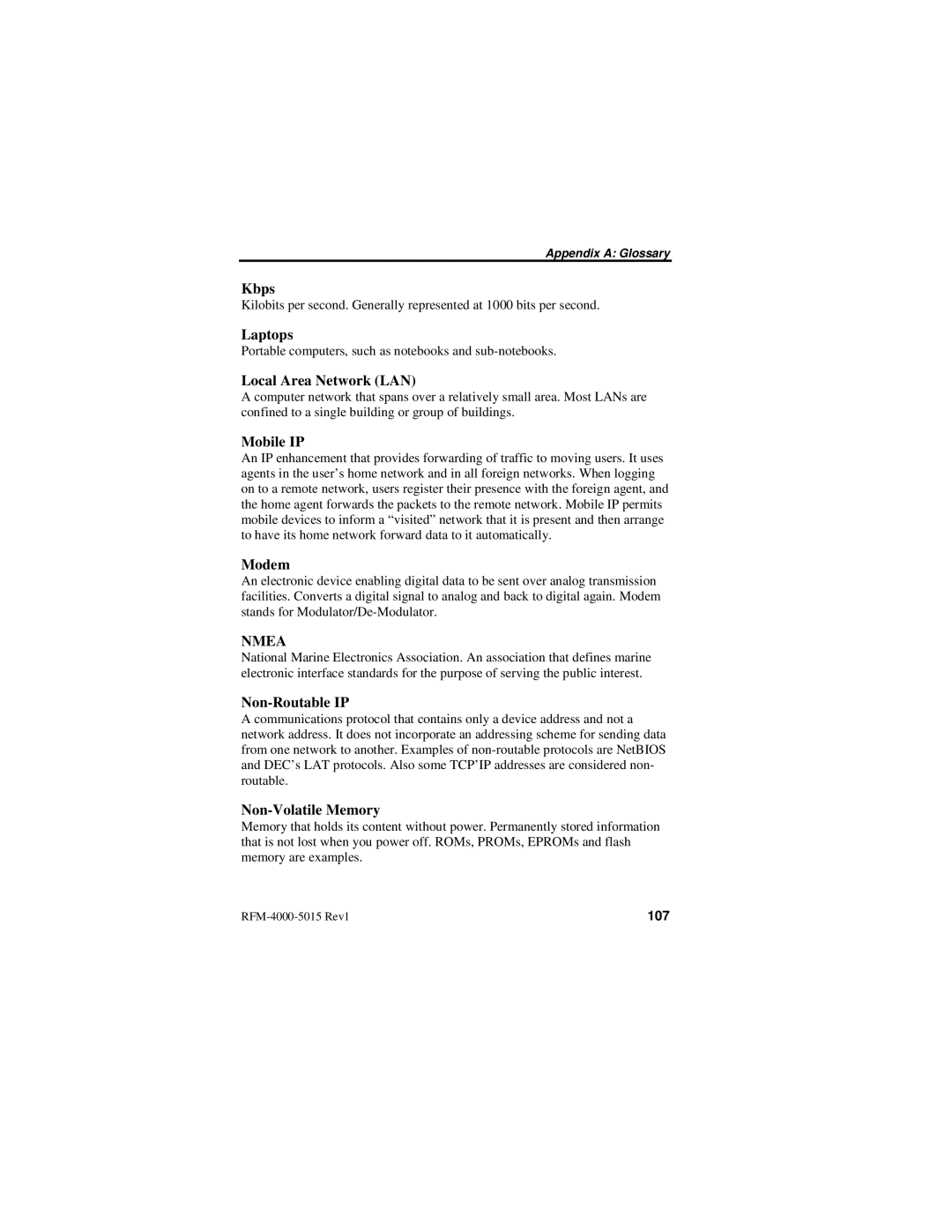Appendix A: Glossary
Kbps
Kilobits per second. Generally represented at 1000 bits per second.
Laptops
Portable computers, such as notebooks and
Local Area Network (LAN)
A computer network that spans over a relatively small area. Most LANs are confined to a single building or group of buildings.
Mobile IP
An IP enhancement that provides forwarding of traffic to moving users. It uses agents in the user’s home network and in all foreign networks. When logging on to a remote network, users register their presence with the foreign agent, and the home agent forwards the packets to the remote network. Mobile IP permits mobile devices to inform a “visited” network that it is present and then arrange to have its home network forward data to it automatically.
Modem
An electronic device enabling digital data to be sent over analog transmission facilities. Converts a digital signal to analog and back to digital again. Modem stands for
NMEA
National Marine Electronics Association. An association that defines marine electronic interface standards for the purpose of serving the public interest.
Non-Routable IP
A communications protocol that contains only a device address and not a network address. It does not incorporate an addressing scheme for sending data from one network to another. Examples of
Non-Volatile Memory
Memory that holds its content without power. Permanently stored information that is not lost when you power off. ROMs, PROMs, EPROMs and flash memory are examples.
107 |
